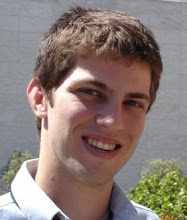Driving in Romania: Dangerous and Loving It
1 comments Posted by Matt at Wednesday, November 04, 2009I've always found that there's something about renting a car outside of the US that's so much more adventurous and exciting. There's no clean airport counter with handy brochures; no smiling Avis/Hertz/Dollar representatives trying to sell you extra insurance covers of gas reimbursements; no big, gas-guzzling American cars sitting out in the parking lot. Instead, there are shady one-room offices on the outskirts on the city, bearded men with thick accents asking for your passport, and tiny, inevitably European cars that a handful of frat boys could pick up and flip over. The whole process just feels so much more unpredictable, even exotic, for lack of a better word.
To start our week driving around Romania and Transylvania, Kyle and I picked up a rental car Monday morning in Bucharest, Romania. We chose the cheapest option, a four-door Dacia Logan, and apparently the law "you get what you pay for" applies in Eastern Europe as well. What we got for our €23 a day: a dirty, slightly dinged-up car that needed to be jump-started with no power steering, no ABS brakes, a radio that shorted out after two hours, smearing windshield wipers, and a lack of windshield wiper fluid. On the plus side, the clutch was set up so that the car was nearly impossible to stall, and it had seat belts.
Our car in hand, we set off on our drive north. Even on the main roads, you pass horse-drawn carriages, which, believe it or not, seem to have just as much right to use the lane as cars driving 60 mph. Drivers make passes going around blind corners, and you can only cringe as the guy in front of you pulls out to pass with a semi barreling towards him in the other lane. Of course, this being Romania and with a certain 'natural selection' process occurring on the roads (only the good drivers survive!), accidents are surprisingly rare, at least that we've seen.
(So you don't think that it's just me who's making this up, here's a funny article on driving in Romania. It's a few years old, and our car isn't quite as bad as the one described, but it's an entertaining look on what it's like to be on the roads here.)
It's not all near-death experiences, though. The scenery is beautiful- like everywhere else we've been, the fall colors are spectacular- and the Transylvania Castle's we've seen have been just as amazing as they're described. Driving is by far the best way to see a place as large and varied as this, and a few adrenaline rushes on the road is a small price to pay to see the sights.
Labels: driving, matt thier, road adventures, romania
The funny thing is, running into a deer with our car was one of the less memorable parts of our day driving across Lithuania. Sure, the front of the car got slightly bent out of shape; the driver (none other than yours truly) was a bit shaken up by the sight of Bambi bouncing off the bumper; and the four other passengers were temporarily reduced to screaming, stressed-out captives. But in a day jam-packed with sights and stories, the one about the accident ranks down on the list.
Let me backtrack a bit and start from the beginning. Our weekend in Lithuania, the southern-most of the Baltic states, was spent with three of Kyle's friends from England who had taken some time off work to join us on our adventure. Lithuania is one of those places, like Timbuktu, that one hears of in passing, might be able to find on a map, but really has no idea what is in it or why on Earth someone would go there. And walking around the capital, Vilnius, which apparently is the country's biggest city but could have been mistaken for a ghost town the weekend we visited, my questions as to the allure of the place only grew.
That all changed when the five of us hopped into our rental car and set off on a cross-country drive (of 400 kilometers). The Lithuanian countryside is gorgeous: the narrow roads snake past gently rolling hills. Cobalt-blue lakes contain picturesque castles on islands, connected to the mainland by drawbridges straight out of a fairy tale.
Our first stop of the day was the Hill of Crosses, a Catholic pilgrimage site for the past few centuries that gained increase importance during the Communist years, when it became the place to quietly protest the ruling regime. There are around 200,000 crosses on this hill alone, so many that it's impossible to get a sense of the topography of the land-- the crosses just seem to rise like trees from the flat ground.
Two hundred kilometers past the Hill of Crosses, we reached the coast, where we caught a 3 minute ferry ride to the Curonian Spit. At 100 kilometers long, it's the world's largest and spit, a giant sand dune barrier between the Baltic Sea and the Lithuanian shore. After getting off the ferry, we quickly crossed the 1 kilometer width of the spit and watched a glorious sunset from the beach.
Darkness upon us, we set off driving the 40 kilometers we had left before our destination, the town of Nida. A narrow road through a forest late at night is never the set-up for a cheery story, and this one was no exception. I'll skip the details, but a brief summary is that the deer survived and ran off, the car was only cosmetically damaged, and no human was injured.
That adventure in the books, we proceeded to Nida, where we had hoped to be able to find a place to stay without making a reservation. Imagine our surprise when we drove into town and found ZERO sign of life. No people on the streets. No lights shining through any windows. No open hotels. After a brief and slightly frantic search, we found the only open hotel in town, a huge place in which we were the only guests.
The next morning, thing returned to normal. The drive back to Vilnius was uneventful, Kyle's friends returned to England, and he and I boarded an overnight bus that took us to Warsaw, Poland. But our time in Lithuania was fab: it's perhaps the only place in the world where in one day, you can go from city to sacred pilgrimage site to giant sand spit, with a little wildlife thrown in there, too.
Labels: Lithuania, matt thier, road kill





